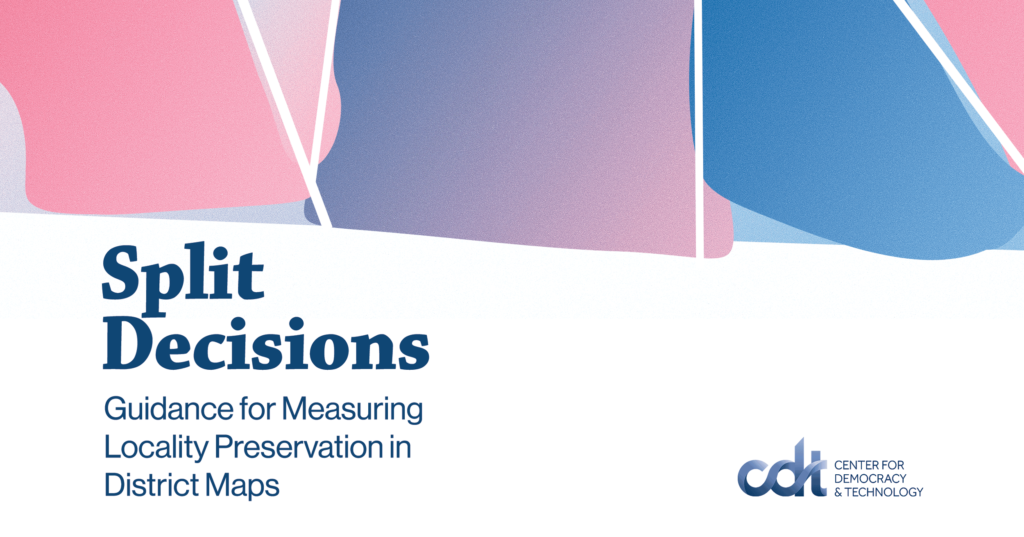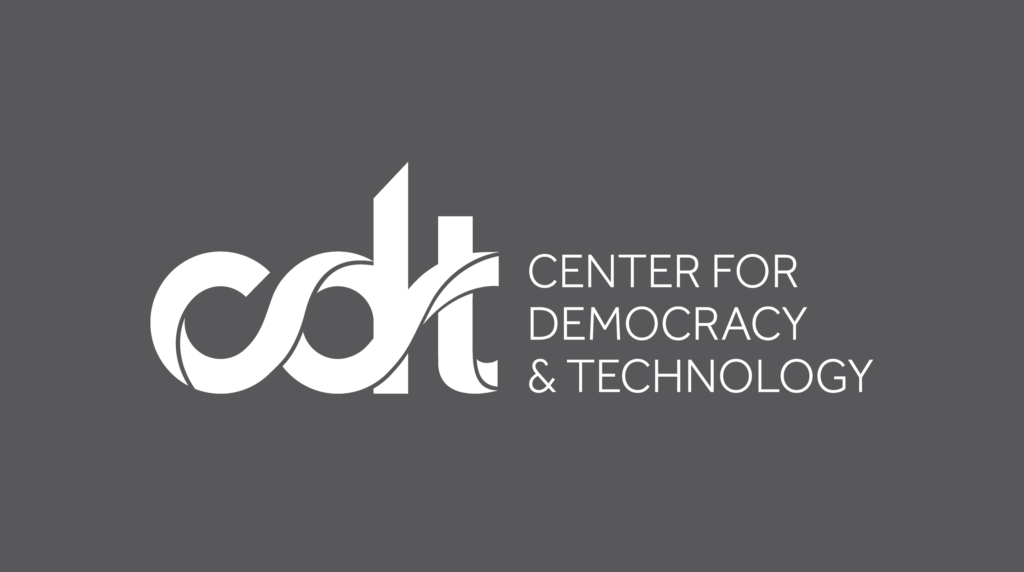Cybersecurity & Standards, Elections & Democracy
Report – Split Decisions: Guidance for Measuring Locality Preservation in District Maps

This report is authored by Jacob Wachspress and Will Adler, CDT’s Senior Technologist for Elections & Democracy.
There is a great deal of public distrust in U.S. elections right now, and unfortunately, the usual process for how congressional and state legislative districts are drawn is unlikely to bolster voters’ confidence that elections are free and fair. Every ten years, state legislatures redraw their district boundaries to account for the shifting population, usually enacting maps as they do any other legislation. If one party controls the process, they can draw district lines to maximize their party’s share of seats (i.e., partisan gerrymandering). Or, both parties can collaborate to ensure safe districts for incumbents, who can cruise towards an easy re-election (i.e., bipartisan gerrymandering). All forms of gerrymandering undermine the idea that voters should choose their representatives, rather than the other way around—and therefore undermine trust in democracy.
To build trust by making the redistricting process more transparent and involving the public in the process, it’s important to have the right tools. Since the last redistricting cycle, new software has created avenues for the public to engage in the process, including submitting maps, evaluating maps, and giving public input to redistricters like indicating their communities of interest (COIs)—geographically contiguous groups with shared cultural or economic characteristics that create common representational interests.
And once the public has given input (as is standard in a majority of states), it’s important to determine the extent to which groups of voters are kept whole within a district. A large group of voters may have their electoral power needlessly diminished if they are concentrated within a single district.
Keeping localities whole, such as counties or COIs, has several benefits to democracy:
- Empowering communities. The Voting Rights Act of 1965 provides protection against racial gerrymandering, when, for instance, map drawers marginalize minority voters by splitting them among many districts. Some states provide similar protection for COIs, which may be a school district, a historically Cuban neighborhood, or a mining town. These communities stand to benefit from the power to choose their representative and lobby for specific legislation.
- Simplifying election administration. Counties that are kept whole have to manage fewer races and ballot styles, potentially preventing ballot mis-assignment—which might have affected which party controlled the Virginia House of Delegates after 2018.
- Informing voters. Keeping localities whole helps voters stay informed about their representatives. A 2010 study found that voters in better-preserved counties were more likely to be able to correctly name congressional candidates in their district.
- Obstructing extreme partisan gerrymandering. While not a panacea for partisan gerrymandering, encouraging lawmakers to preserve counties limits their ability to carve up voters and maximize partisan gain.
But there is no single accepted way to measure the degree to which a district map splits up a given set of localities. Some commonly used metrics for measuring locality-splitting are entirely geography-based; they do not take into account where voters actually live. We recommend against using these metrics. In our new report, Split Decisions: Guidance for Measuring Locality Preservation in District Maps, we describe several population-based alternatives, introduce a new one that may have benefits, and provide additional guidance to those drawing or evaluating maps.
We hope that this guidance will enable redistricting officials and the public to select appropriate locality-splitting metrics, evaluate choices made in redistricting, and bring about fairer representation.


